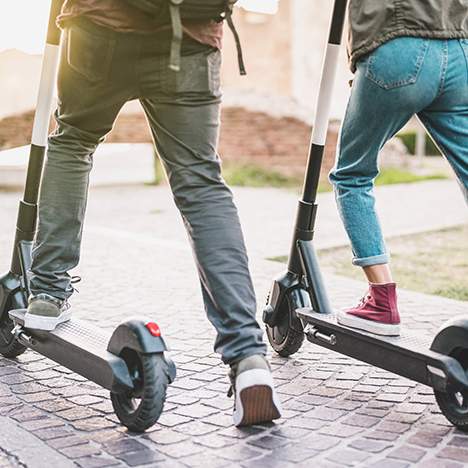In a growing number of cities across the country, self-serve electric scooter rentals have become a common sight. One of the most popular brands on the market, Bird, started with 10 e-scooters in Santa Monica, California in 2019. Now they operate in hundreds of locations across the globe, with competing companies such as Skip finding similar success. With this rise in e-scooter use, electric scooter-related injuries and crashes have also seen an alarming spike. This has left many wondering: are electric scooters safe? If you’ve been involved in an electric scooter crash, taking your case to a law firm with legal experience in many different types of transportation accidents is the best way to recover compensation for your injuries.
What are the chances of a Bird scooter crash (or other type of e-scooter accident)?
As with any form of transportation, there is an innate risk of an accident the moment the individual riding the electric scooter embarks. As e-scooter use remains a fairly new trend, data on the rate of these crashes is still being recorded. The preliminary results of this analysis, however, do show that riding e-scooters poses an increased risk of injury. A 2020 study by the Insurance Institute for Highway Safety found that “e-scooter riders sustained more injuries per mile than bicyclists.”
What causes an electric scooter crash?
Electric scooter crashes can be caused by a variety of factors. Although manufacturers claim to prioritize electric scooter safety, there have been reports of accidents occurring due to faulty mechanisms. CNET reported on a number of glitches in Bird, Lyft, and Skip scooters which allowed scooters to exceed the 15-mph speed limit, causing riders to crash.
Even using a “safe” electric scooter with no such glitches, riders are exposed to increased environmental risks. The same 2020 study by the Insurance Institute for Highway Safety also found that e-scooter riders were “twice as likely to be injured because of potholes, pavement cracks, lampposts, and signposts.”
Crashes can also be caused by rider behavior, and these types of scooter injuries are the most preventable. For example, the Center for Disease Control and Prevention (CDC) found head injuries accounted for 45% of the injuries reportedly caused by an electric scooter crash when riders were not wearing helmets, or were not aware of surrounding traffic.
In addition to riding without the recommended helmet, the CDC also found that alcohol played a role in many accidents that resulted in an injury: “One-third of respondents acknowledged that they drank alcohol in the 12 hours prior to getting injured.”

Reducing the risks: when are electric scooters safe?
There are measurable steps individuals can take to make riding e-scooters safer, thereby reducing their chances of being in an electric scooter crash. For starters, always wear a helmet. This adds an additional layer of protection in the event of an accident. According to the CDC, wearing a helmet when traveling on two-wheeled forms of transportation (such as a motorcycle or bicycle) can decrease the chance of head injury by 69%.
Another way to make an electric scooter ride safer is to be aware of one’s surroundings. It is recommended to avoid listening to headphones or using a phone while riding. This way the rider’s focus remains on the road, reducing the chances of a distracted “driving” incident – both on the part of the e-scooter rider, and others on the road. Finally, the consumption of alcohol prior to riding an electric scooter should be avoided.
Should I hire a lawyer for an electric scooter crash?
Even if riders follow the recommended safety measures and traffic laws, e-scooter use still leaves a person vulnerable to factors beyond their control. If you or a loved one have been injured in an e-scooter accident, finding an experienced scooter accident lawyer is the first step toward receiving the compensation you deserve.
Avrek Law has more than 50 years of combined experience resolving cases in favor of clients who were wrongfully injured. Our team of attorneys has recovered more than $1 billion in compensation for personal injury victims in over 45,000 cases. We’re here to help – contact us for a free consultation to learn more!
